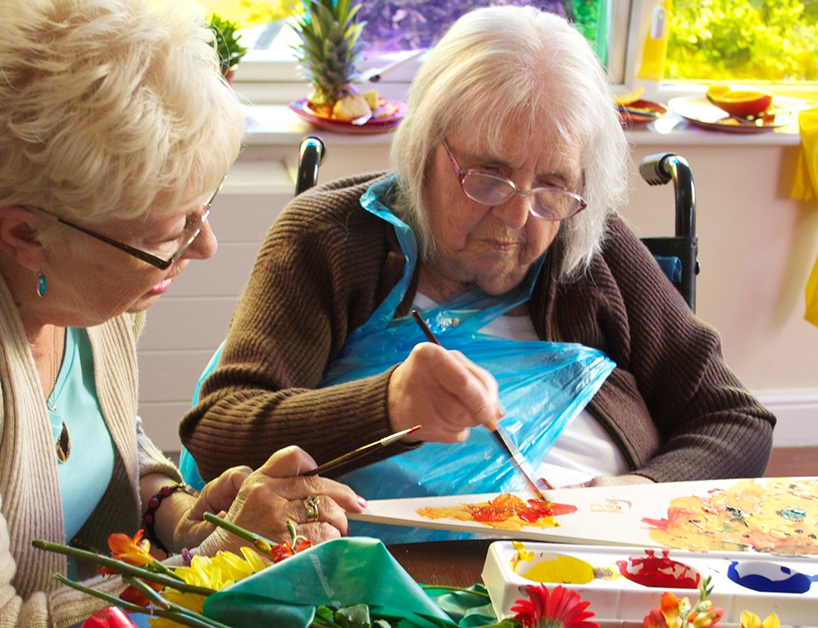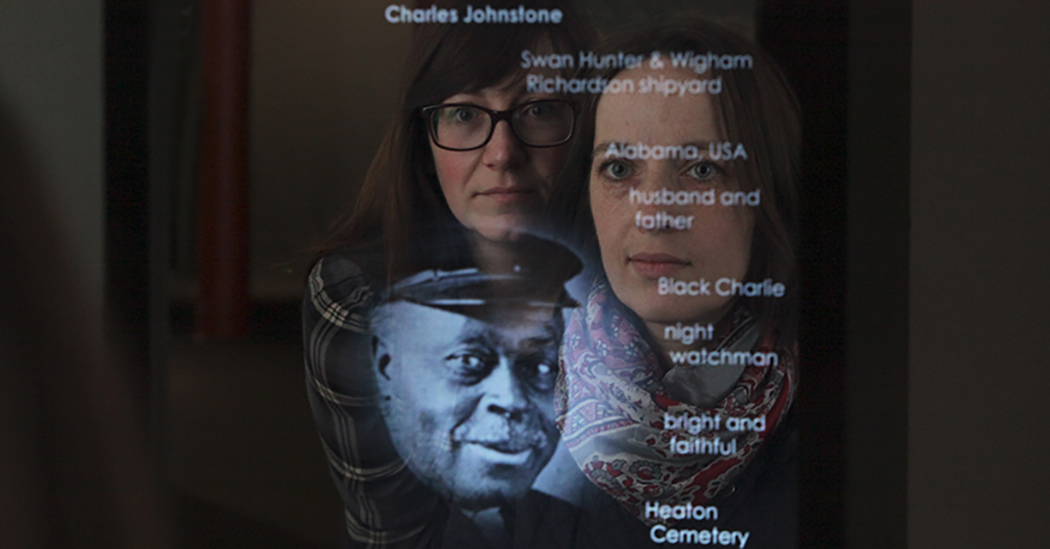Creativity and Practice
Without creativity we cannot find solutions for the problems we tackle; and we cannot imagine different ways of being and doing.
Creativity lies at the heart of what we do. We understand it as a value, a process and an outcome.
Many of us think through making, and this is reflected in the variety of our outputs: academic writing, policy and practice work, a website, a poem, an art installation, a musical composition or a performance.
Creative practice enables us to test and reformulate ideas, to understand deeply, but also to design and build.
Read our case studies below:
Sit With Me: Re-imagining digital museum encounters with 'otherness' - Rhiannon Mason and Areti Galani
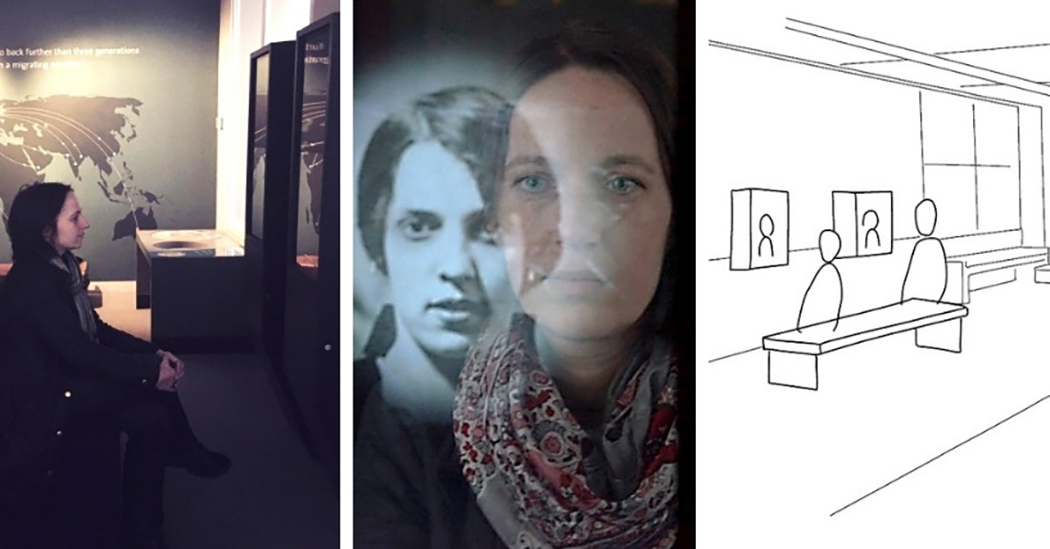
Images courtesy of Mike Unwin, Richard Chippington and David Chatting
Sit with me is an interactive digital media installation, situated in the permanent exhibition Destination Tyneside in the Discovery Museum, Newcastle, UK. It was created by a multidisciplinary design team from Newcastle University, deploying an iterative research-through-design approach. The installation experiments with the idea of creating a space, in which visitors to the exhibition interact with nine ‘portraits’ of historic migrants in the Tyneside and with other fellow visitors.
Improving the Lives of Older People with Dementia - Andrew Newman

The Dementia and Imagination Research Project examined how visual arts enrichment activities improve the quality of life for people in later life with dementia and their carers. This was a UK national project funded by through the Connected Communities Programme and participants were recruited from care homes in the North East of England, NHS dementia assessment wards in the Midlands and domestic environments in North Wales.
Re-imagining the modernist dream at Park Hill, Sheffield - Prue Chiles
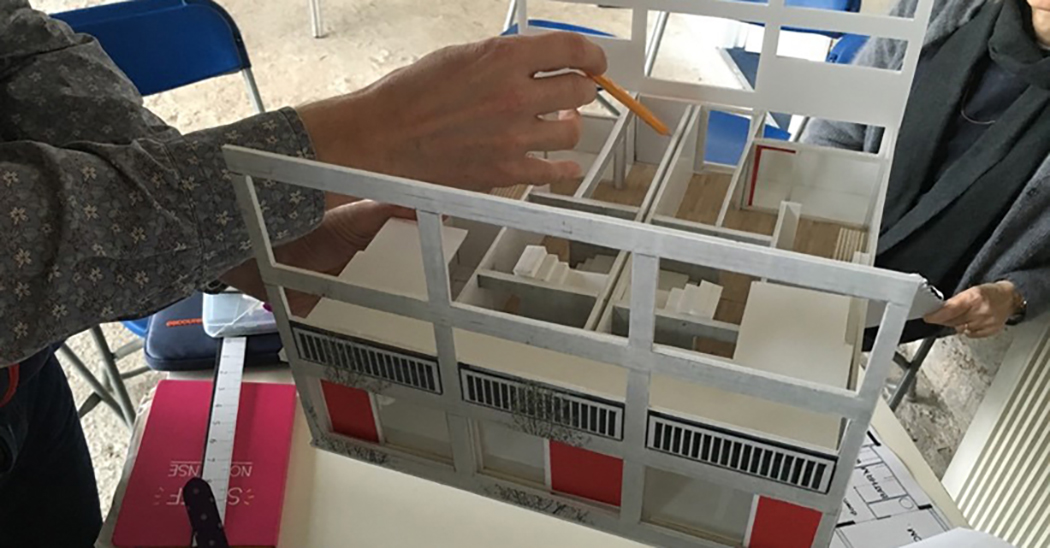
Part of the Imagine project - The Cultural Context of Civic Engagement: Imagining Different Communities and Making them Happen
Over the last 50 years Park Hill been home to thousands of residents and has spawned love and derision in equal measure. We originally set out to find out about the lived experience of Park Hill, the concrete blocks, the feel of living there, as well as the decoration and home ornaments that made up the idea of ‘home’ (Buchli 2002, Miller 2001). The power of the design of Park Hill and its specificity however, has led us to concentrate on their experience of the very fabric of modernity and how they see their future there.
We collaborated with a small community of the new Park Hill residents and make a case for “making”, using drawings, models and images as a way to think about their lived experience and how it might change and allow re-imagining.
Who do we think we are? Exploring Identity, Place and Belonging in North East England - Rhiannon Mason, Areti Galani, Katherine Lloyd and Kylea Little
This project was developed in partnership with Tyne and Wear Archives and Museums (TWAM) and focused specifically on the ‘Destination Tyneside’ display in the Discovery Museum. This museum tells the city history of Newcastle, as well as the history of science and technology in the region. ‘Destination Tyneside’ is a permanent display about the history of Tyneside’s development and focuses specifically on the history of migration to the area.
The research project, ‘Who do we think we are?’ investigated how this display addresses issues of migration, identity and belonging in the North East of England. Specifically, it examines how the display tries to engage visitors empathetically with the history of migration through telling the stories of individual migrants.
Our research looked at what drives visitors’ identification (or lack of identification) with displays like this which aim to reframe regional and city histories in more inclusive and diverse terms.
Networking New Opportunities for Artists in East Africa - Andrew Burton
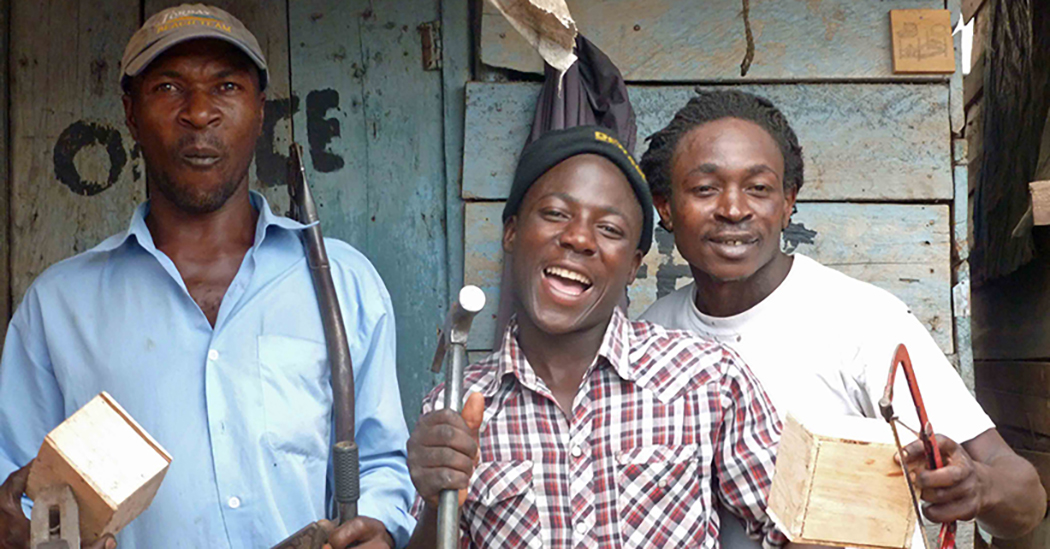
AHRC Global Challenges Research Network.
There is a thriving community of artists at work in East Africa. Many of these exciting and creative people are at the beginning of their careers. But despite terrific energy on the ground and the sound intentions of regional governments expressed in The East African Community cultural policy, the reality is that there is little infrastructure for artists, a lack of training in entrepreneurship and professional development and virtually no public funding for the arts.
Living Archives: Re-imagining Poetry Collections - Linda Anderson
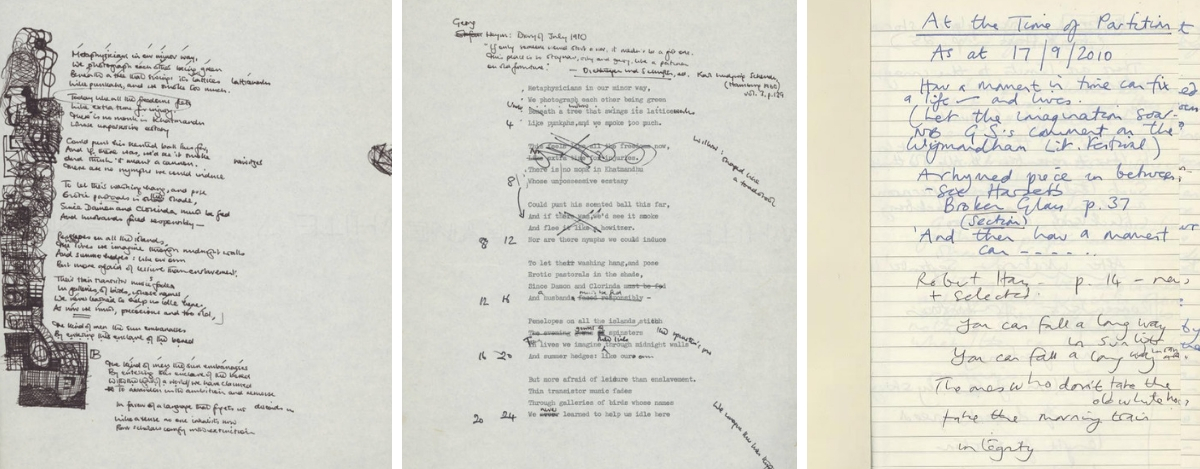
Images: Untitled drafts written by Sean O'Brien (left and centre) and a page from Moniza Alvi's notebook (right)
University investment has enabled the Newcastle Centre for the Literary Arts to develop its Contemporary Poetry Collections by acquiring the archives of some individual poets who have a strong connection with the poetry publisher Bloodaxe and/or the North-East of England. These archives also complement the Bloodaxe Archive we already have, offering insight into the early drafting process, rather than the journey into publication so richly documented by the Bloodaxe Archive.well

